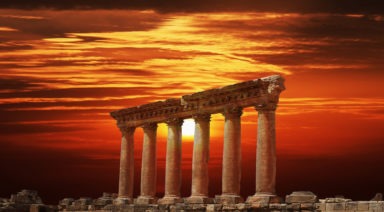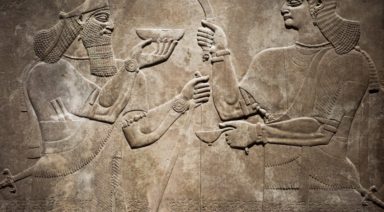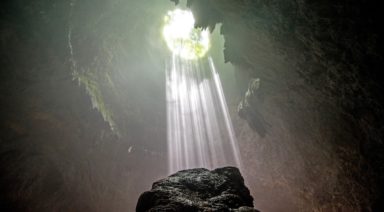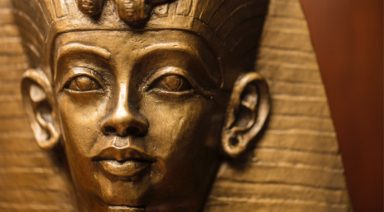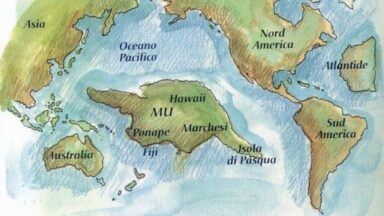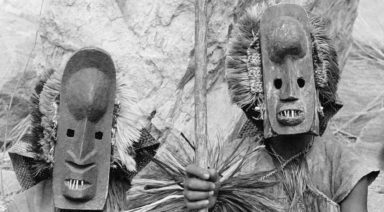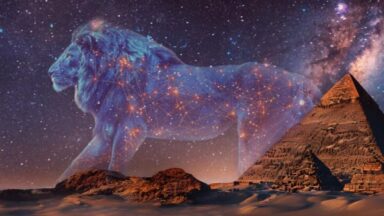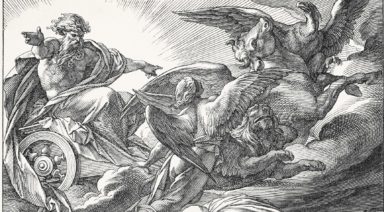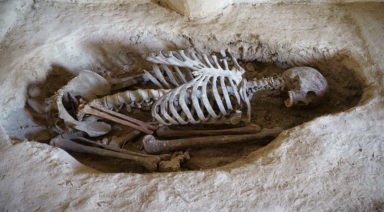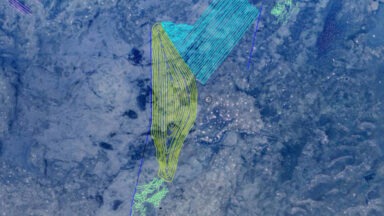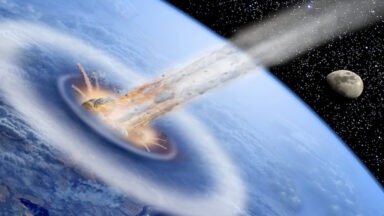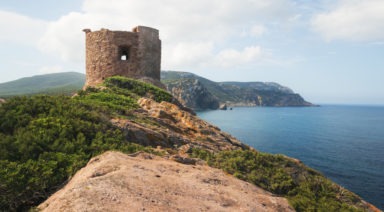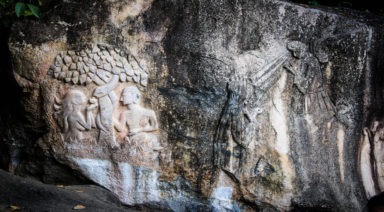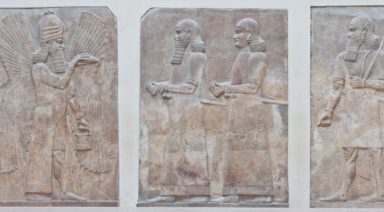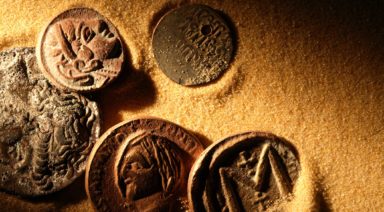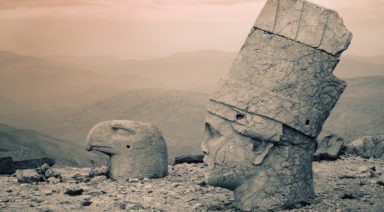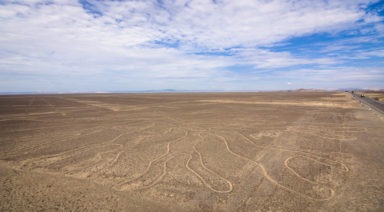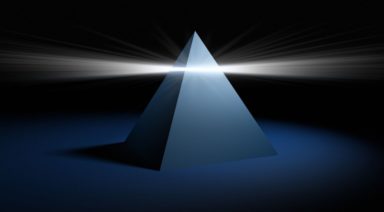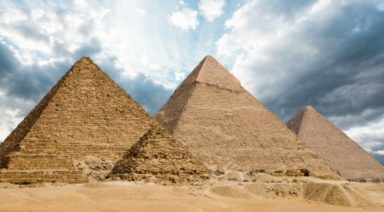A Strange Story Untold: A Cryptic Rock in France
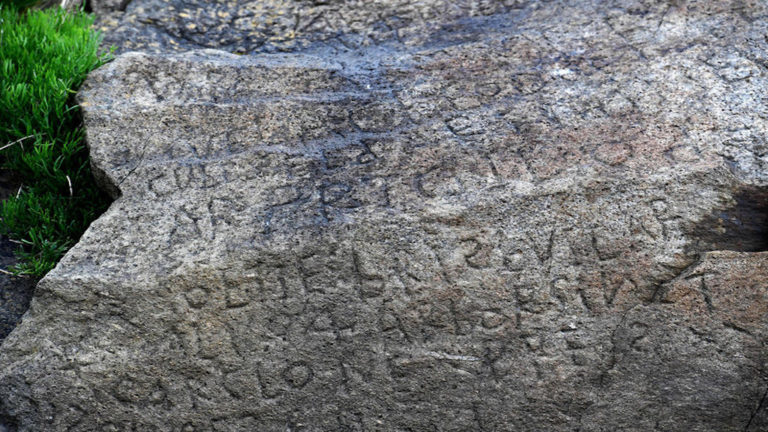
One of the great enigmas of the modern era washed up on the shores of Plougastel-Daoulas, a small village in France, 300 miles west of Paris, and is now attracting international attention. To get there, visitors have to travel to Brittany and then take a path from a hard-to-access hamlet called Illien Ar Guen. On the beach of an ancient cove, the most curious of seekers encounter a cryptic rock the size of a person, with one of its faces covered by mysterious petroglyphs.
Though it’s clear the writing is in the roman alphabet, its meaning remains indecipherable. And now the village is now looking to the international community for help cracking the code. The person able to do so is promised a handsome 2,000 euros (or $2,240) for the feat.
What Are Petroglyphs?
Petroglyphs are regarded as some of the world’s oldest art forms, harkening back to the days of cave dwellers. As opposed to pictographs, which are paintings on rocks, petroglyphs like the one at Illien Ar Guen were created when the artist chiseled words or pictures deep into the surface. By engraving a rock, rather than simply drawing or painting on it, depictions have been persevered through the ages and have managed to resist the ravages of time, wind, rain, and climate.
In the modern era, sites where petroglyphs have been discovered are often considered profoundly important to anthropologists who regard them as cultural history. Surprisingly, though, rock art research seems to still be in its infancy, and anthropologists are eagerly awaiting technological developments to help them determine more about the cultures that produced it.
Until more sophisticated technology comes along, research tactics remain rather old-fashioned and slow-going. As in the case of the puzzling French rock writing at Illien Ar Guen, local officials have been inviting history, anthropology, and other scholars from the international community, to come take a look at their treasure after it has managed to stump local academics.
Much of the information gleaned from the petroglyphs to date seems shaky at best. Some believe the inscription is a code, while others think it is simply written in the language of a bygone era. According to CNN, “Dominique Cap, mayor of Plougastel-Daoulas, told Agence France Presse (AFP): ‘There are people who tell us that it’s Basque and others who say it’s Old Breton.’”
There is one thing that most experts agree upon, however — they’re all pretty sure the mystery rock only dates back a few hundred years, to the two years etched into the Brittany rock: 1786 and 1787. These two dates are significant to the village’s history, a period when forts and artillery batteries were being constructed to protect Brest, a strategic harbor city up the coast.
Mystery Rocks
It seems that mysterious rocks abound when one cares to look for them.
The United States alone contains myriad sites with symbols that have yet to be deciphered, such as the Decalogue Stone in New Mexico, the Dighton Stone in Massachusetts, and the Judaculla boulder in North Carolina. In contrast to the French rock at Illien Ar Guen, though, each of these dates back much farther than a few hundred years, making it more understandable that any other traces of their written languages might be impossible to find.
A Scholarly Competition
Numerous sources have referred to Brittany’s rock as the village’s own Rosetta Stone, which remained an unsolved mystery itself for 23 years, until Jean-Françcois Champollion deciphered it in 1822. As an homage to the cryptologist, who has been regarded as the “Father of Egyptology,” the decryption competition has been aptly named, “The Champollion Mystery at Plougastel-Daoulas.”
Mayor Dominique Cap explained to the BBC that the town exhausted its resources of historians and archaeologists, and is hoping to draw the attention of international scholars with the competition. For now, their hope lies in attracting linguists and historians who may be their best bet in solving the riddle.
The inscription embedded into the rock is written in all capital letters, containing Scandinavian accent marks such as Ø letters and characters that appear to be upside-down. AFP presents a part of the description as the following:
ROC AR B… DRE AR GRIO SE EVELOH AR VIRIONES BAOAVEL… R I OBBIIE: BRISBVILAR… FROIK…AL
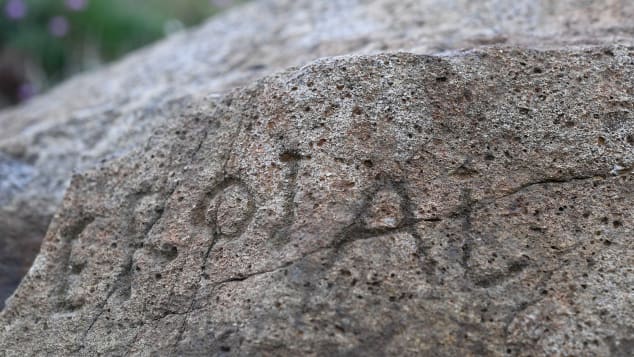
The engraved rock courtesy AFP
To add further mystery to the strange writing, there are apparently a few pictures also carved into the rock, including one of a sailboat.
Visitors with romantic leanings may fantasize that the words on the French rock comprise a precious love letter, or perhaps they bear directions leading to a buried treasure along the coast. Or, maybe, the writing are the last solemn sentiments of a cold and lonely sailor who had washed up on shore at the hands of the dangerous Iroise Sea — known to be one of the most dangerous seas in Europe for sea-going vessels.
But in light of the circumstances — that the message was written only a couple centuries ago, at a spot where the high tide regularly comes to greet the edifice — the more skeptical doubt whether the author intended to write something indecipherable.
For now, however, the message remains a lost communication, sent from one individual to recipient(s) unknown. Like the inscriptions of so many other petroglyphs around the world, perhaps this one lying on the cold shores of northern France will forever keep safe its origins and the meaning of the words that were painstakingly hammered for another to read.
Michel Paugam, a member of a small patrimony of the town hall of Plougastel-Daoulas, who continue to scratch their heads over the inscription — surmised, “If someone took the trouble to engrave about twenty lines, it’s not just to say that the weather is nice in Plougastel.”
The Megalithic Baalbek Temple; An Ancient 'Landing Place?'
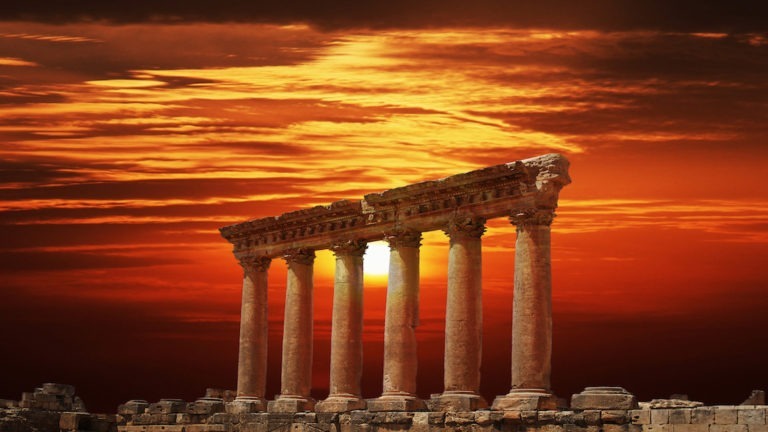
When one considers the mysteries of ancient megalithic ruins, famous sites such as Stonehenge, Palenque, and Göbekli Tepe come to mind, though less often are the temple grounds of Baalbek mentioned in the same breath. There, perched 3,000 feet atop a sacred hill in Lebanon’s Beqaa Valley, lay the ruins of one of the world’s most massive megalithic sites, containing some of the heaviest quarried stones of antiquity. Still, little is understood of its construction.
Baalbek is located in the northeast of Lebanon, about 60 miles outside of Beirut, making it a difficult place to travel these days. But during the time of Roman imperialism, it was known as Heliopolis, the “City of the Sun,” founded by Alexander the Great in 334 BC. Baalbek became the site of Roman temples dedicated to Jupiter, Bacchus, and Venus, based on a popular cult devoted to this famous triumvirate.
Though the foundational stones and the location in which they were quarried have been known for some time, the site’s biggest megalith was discovered just recently. Weighing in at a whopping 1,620 tons, it outweighs another mysteriously gargantuan monolith from the same quarry, known as the Pregnant Mother Stone, by 400 tons.


